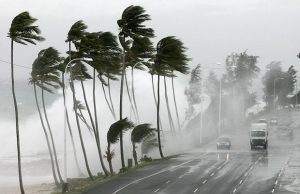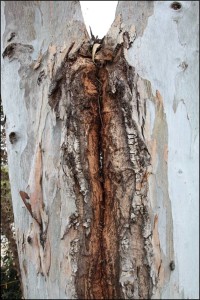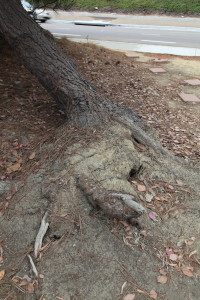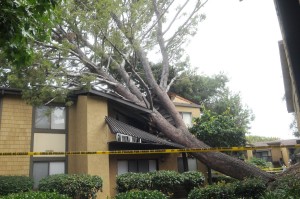El Nino is Here—Everyone Panic!
Or Keep Calm and Make a Plan
 They warned us that El Niño was coming and the first week of January brought the promised storms. While the rain supplied inches of much needed precipitation to San Diego County, it also led to flooded streets and downed trees. After years of drought when we so desperately need rain, why did these storms cause so many trees to break or be uprooted and what can be done to prevent this in the future?
They warned us that El Niño was coming and the first week of January brought the promised storms. While the rain supplied inches of much needed precipitation to San Diego County, it also led to flooded streets and downed trees. After years of drought when we so desperately need rain, why did these storms cause so many trees to break or be uprooted and what can be done to prevent this in the future?
Feeling Uprooted?
Soil failures result when the required force to anchor a tree exceeds the capacity of the soil to maintain it. One of the factors for soil failure involves saturated soil from excessive rain or excessive irrigation. Part of the problem is that our San Diego soils tend to be primarily clay. The other problem is that water restrictions resulting from the current drought have left trees unprepared to cope with adverse conditions.
When it comes to trees, clay-rich soil should be watered less frequently and for a longer duration to encourage the formation of deeper root systems. Deep root systems in turn assist in stabilizing soil. Watering for shorter periods of time, even if it’s more frequently, can cause trees to develop shallow root systems, which, when saturated by multiple rainfalls, may result in soil failure. One way to prepare for El Niño or even El Niño-type storms is to ensure that your irrigation regime is appropriate for the area.
Whole or partial tree failures occur when tree trunks or branches are subjected to forces strong enough to exceed the strength of the stem. Sometimes these failures can be predicted by a careful inspection of the trees in question, and certain tree species are more susceptible to breakage than others. Silk Oak (not a true oak) has very weak wood prone to breakage even in years with no strong storms. Sweet gums and many pines are also weak wooded. You can find information on wood strength at the Urban Forest Ecosystem institute website Select-A-Tree: https://selectree.calpoly.edu/
The prudent course of action is to implement a regular documented tree inspection program

 The information gleaned from inspections can help you make decisions about your urban forest that will keep it both safe and healthy. A regular inspection of trees will help you identify tree hazards that exist on your property and aid in developing mitigation strategies. It has been recommended that trees be inspected at least annually during years of normal weather. In El Niño years, those inspections should become more frequent. Implement an inspection protocol before storms arrive.
The information gleaned from inspections can help you make decisions about your urban forest that will keep it both safe and healthy. A regular inspection of trees will help you identify tree hazards that exist on your property and aid in developing mitigation strategies. It has been recommended that trees be inspected at least annually during years of normal weather. In El Niño years, those inspections should become more frequent. Implement an inspection protocol before storms arrive.
During the inspection,
- examine all sides of the tree and look specifically for cracks in large branches and any leaning trunks. Also important during the inspection is to
- examine the soil around trees, especially leaning trees. Many times the soil will show signs of failure by cracking. You may even see tree roots that are broken.
- Document these conditions with photographs and notes.

After a storm, it’s time to re-inspect trees using your notes and photos as reference. For instance, a photo may show that a leaning tree has moved since the storm and now needs to be addressed. Conversely, a tree with a lean may turn out to be in exactly the same position and can be left alone to weather the next storm.
Much of the time, pruning a few branches will prevent a future tree failure and allow the tree to be enjoyed for years to come. Don’t wait for the next set of storms to come. Implement a proactive tree inspection program now and you won’t have to worry at all about El Niño.
– Tim Clancy, GPS/GIS Tree Inventory Manager

